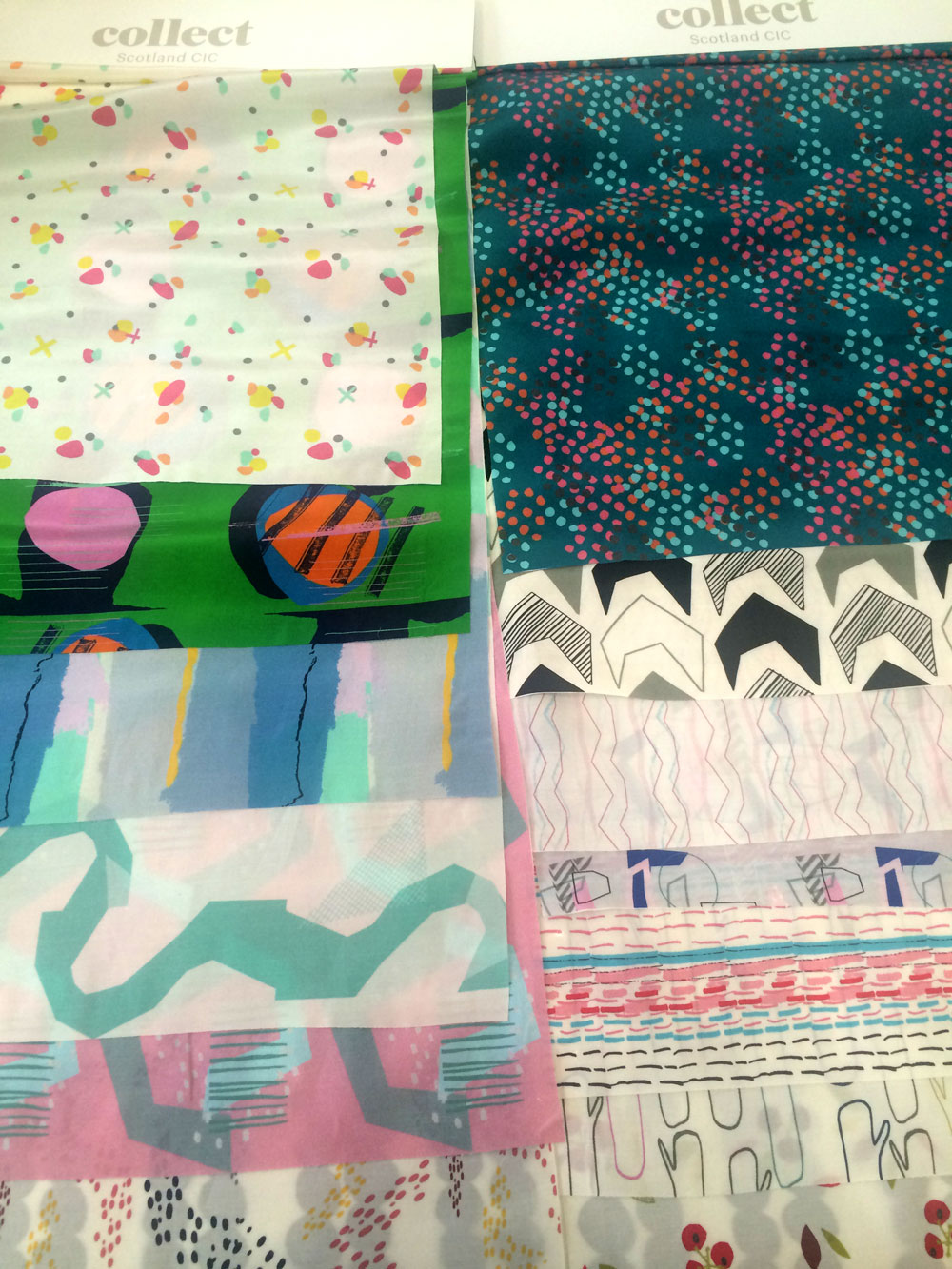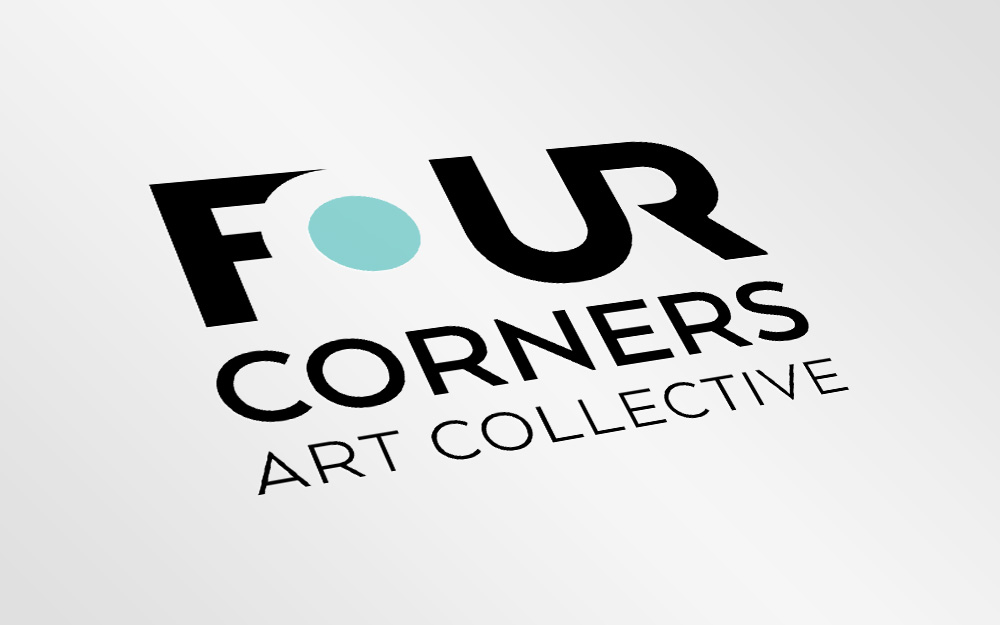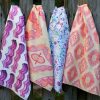It’s an honor to welcome Four Corners Art Collective to the blog for the next three Wednesdays, sharing a series of posts on the workings of their collective, from its formation to their experiences at trade shows like Surtex and Premiere Vision.
Since launching Four Corners Art Collective in November 2015, we’ve been asked a lot about how we got started and what was involved, so we thought we’d share some of the processes we’ve been through and the lessons we’ve learned.
The seven of us met on a design e-course. Learning together was loads of fun and a fast way to get to know each other. When the course finished, Emma and Kevin loosely outlined an idea for a collective and emailed a one-page proposal to the people in the group they really connected with.
Emma: “There were some voices in the group that really stood out to me – people who were professional, constructive, supportive, thoughtful, but also good fun.”
Beth: “We were also attracted to each other because of the high caliber of each other’s work.”
Pippa: “We all recognized in each other that we were serious about making long-term careers in the surface pattern design industry and that we all missed the support and shared environment we had whilst we were studying together.”
Creating An Art Collective: Getting Started
Our first step was to create a closed Facebook group so we could explore the idea properly. We still talk there every day and from the outset it’s been invaluable as a safe space to discuss things, flesh out our plans and share research. There were actually lots of other people on that e-course whose work we loved but we knew we needed to keep things manageable, so we stuck to an initial principle of no more than eight in the group.
If you’re thinking about starting a collective, one tip is to read blog posts by other collectives and discuss the issues they raise. That helped us address potential hurdles and find common ground on key issues. Next we organized a Skype call to make a final decision about whether to go for it or not. We were all a bit nervous to finally ‘meet’.
Emma: “We quickly realized on that first Skype that we were all on the same page. Everyone wanted to form for the same reasons and we were all keen to keep things as simple as possible.”
Kevin: “We wanted to spread the risk of exhibiting at shows, as well as to provide support and share information. It was exciting to finally talk and feel like a real group.”
Beth: “As soon as I hung up on that call I knew it was a no-brainer. Everyone was so great!”
Developing Your Branding
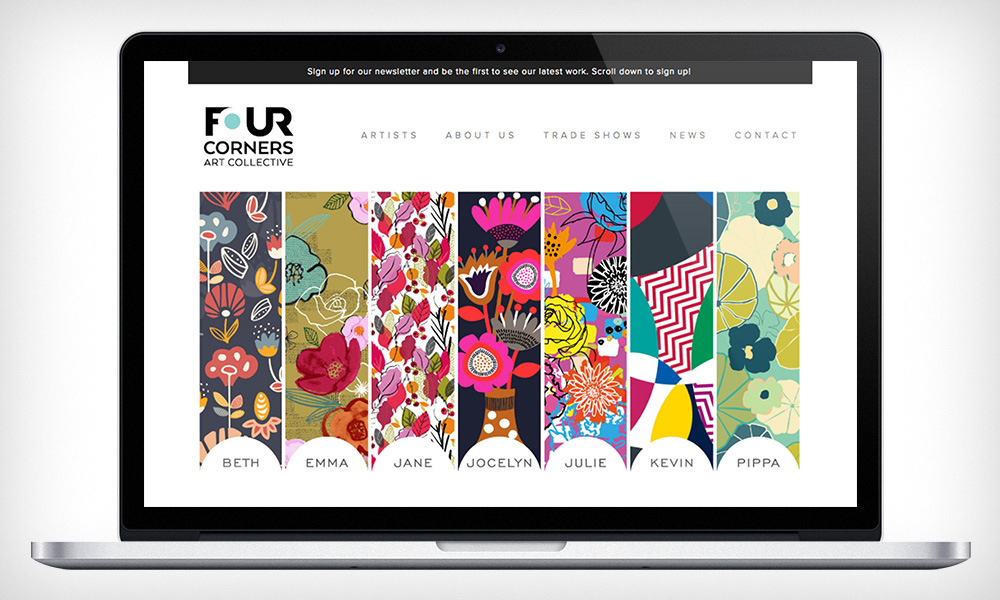
Two members of the group with graphic design experience came up ideas for our brand and logo. We made a deliberate choice to go for something clean and graphic rather than ‘artsy’ or hand-rendered so our collective brand didn’t fight with our individual brands and complemented all our styles, which range from painterly to vector.
Now we were agreed that we wanted to form the collective and we were clear about our expectations and levels of commitment, we prioritized what we needed to do to get launched and set some deadlines.
Jules: “We all wrote an outline of our thoughts on what we felt the collective should be and how it should work.”
Pippa: “The hardest thing about forming the collective was choosing the name! We spent weeks coming up with suggestions. We knew it would be impossible to come up with a name that we all totally loved but we also agreed it couldn’t be a name that one of us hated.”
Kevin: “Decisions like the name of the collective and designing the logo are always democratic. No single person is in charge or makes final decisions. We go with the consensus and take everyone’s views into account.”
Creating A Business Plan
So far we haven’t felt the need to write any kind of business plan or strategy. We’re not incorporated as a formal company and we don’t have a shared bank account. Nobody spends money without checking with the group first, costs are split evenly and we transfer money via PayPal.
Jane: “We’ve managed to naturally get things done without needing any rules or formalities.”
Jocelyn: “The members of the group have different strengths including organizational and facilitation skills, website design, graphic design and advertising, social media experience, administration skills, motivational skills. Every person has been involved in getting things off the ground and launching the collective.”
Pippa: “Most decisions seem to fall in place around our shared goals. We get together on Skype once a month and chat day-to-day in our private Facebook group.”
Marketing An Art Collective
Our number one focus is on making work and getting that work seen by buyers and art directors, whether that’s online, at trade shows or by making direct contact. Social media is important but it can also be a real time-sink, so we agreed to stick to a website with occasional blog posts, Instagram and Pinterest. So far, we have no plans to create a Facebook page or to start tweeting!
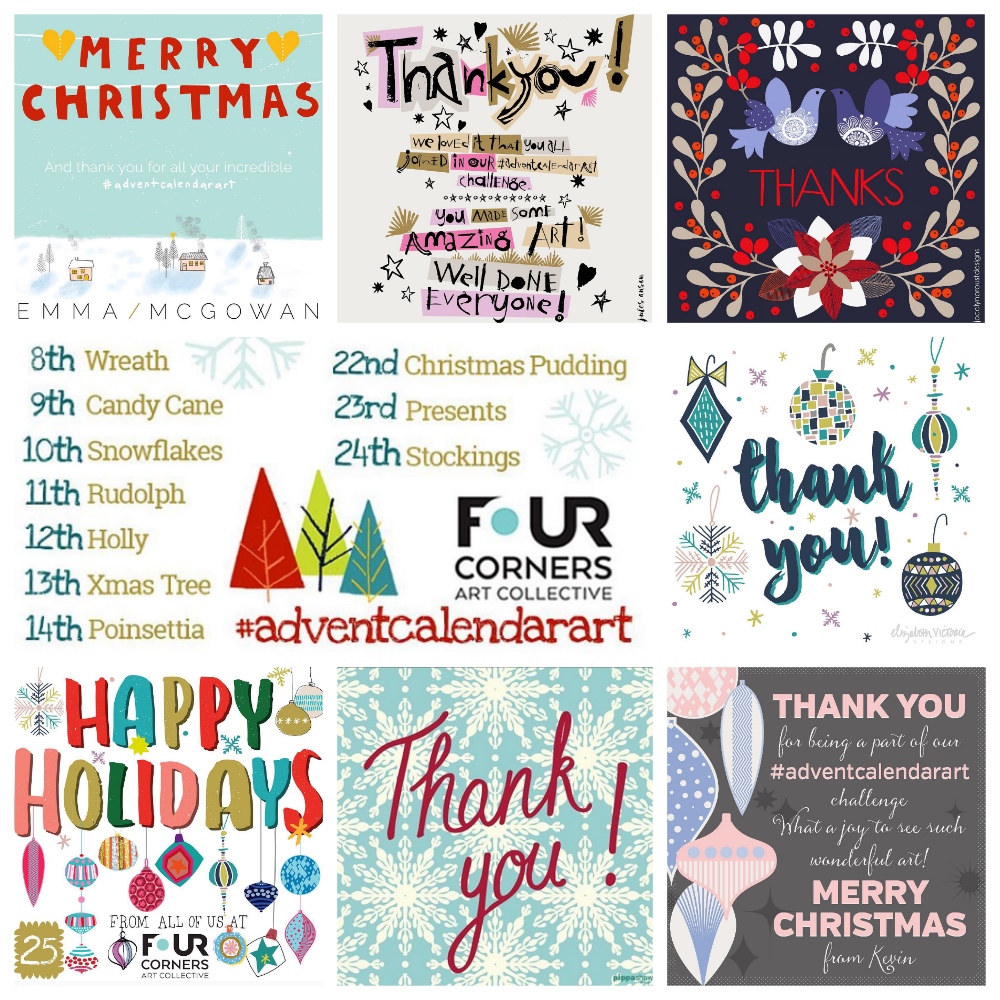
As we approach our first birthday, we all agree that being part of a collective has really pushed us further than we would have got on our own.
Jane: “I couldn’t imagine having the impetus to create new work were it not for the collective. It’s so important to have the group to work with.”
Jules: “We keep each other focused and offer ideas and encouragement at times when we feel a little lost on the journey. Without the collective I don’t think I would have got as far as I have so soon.”
Emma: “I would never have had the courage to exhibit at Surtex this year if I hadn’t been part of the collective, so there’s no doubt that being a member of Four Corners has already paid off hugely.”
Next week we’ll compare our experiences of exhibiting at Premiere Vision, Surtex and Blue Print, and reveal our top tips for preparing for trade shows.
About Four Corners Art Collective
Four Corners is an international collective of seven surface pattern designers creating fresh, modern patterns for products and publications. Our work is available to license or buy outright and can be applied across markets – bolt fabrics, apparel, home décor, gift, stationery, quilting, and more. Clients include: Hallmark, The Guardian Newspaper, Dashwood Studio, Workman Publishing, Michael O’Mara Books, Proctor & Gamble, American Flat, and Leap Year Publishing.

